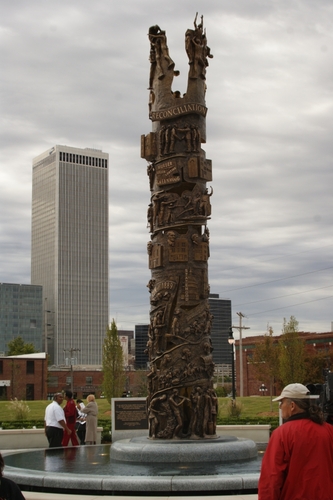SAXTONS RIVER — This is not who we are. We are better than this.
I can't bear to hear those platitudes from people who are blind, lazy, or have no sense of American history. This is who we are, and who we have been, since Columbus stood on American soil.
Since then, Native American peoples have been oppressed, and the oppression continues.
Forced into soul-destroying reservations, the 17th-to-20th-century Indian Wars led to the Wounded Knee massacre, where thousands of Native Americans were slaughtered.
The Trail of Tears march that forced Native people off their land killed more than 15,000 First Americans.
Today, U.S. Customs and Border Protection contractors tear through sacred tribal sites destroying archeological treasures that represent America's history and culture to build a wall for keeping brown people out of this land.
This is who we are, and who we have been, since lynching terrorized Black Americans into submission and an inferior caste system. Post–Civil War to the 1950s, African Americans living in the South were subjected to unimaginable physical torture that too often ended with being hanged and set on fire. Jim Crow laws legalized racial segregation to prevent African Americans from voting, holding decent jobs, or getting a good education.
In 1921, Black residents in Tulsa, Okla. were driven from their homes while their entire community was burned to the ground. The crime was so effectively silenced that few people today know about it.
The infamous Tuskegee Study of Untreated Syphilis in the Negro Male subjected Black World War II airmen to syphilis without their consent so that researchers could conduct experimental treatments. None of the 399 men infected with syphilis received penicillin, even though it proved to be an effective treatment.
This is who we still are, as police continue murdering Black men and women and bludgeoning peaceful protesters standing up for justice in the names of George Floyd, Breonna Taylor, and multitudes more.
* * *
But fragile though they are, there are signs of who we can be in the face of dictatorial repression.
Mass protests, along with global solidarity from people of all ages, races, and economic strata willing to risk COVID-19 in the name of justice, offer hope for another kind of “new normal” as we move forward in these deeply difficult, terribly troubling times.
Police taking a knee and line dancing with protesters gives me hope.
Children, Black and white, singing and chanting “No justice, no peace” gives me hope.
Local leaders, like the mayor of Washington, D.C., who painted the street with “Black Lives Matter” in defiance of a would-be monarch in her city, give me hope, as do those who are calling racial injustice an emergency that requires ending police funding and forging new coordinated paths to saner, safer public protection and safety.
Organizations ranging from local theaters to community foundations to businesses publicly apologizing and pledging reform in hiring, training, and intolerance of racial injustice give me hope.
People learning about the history and violence of institutional racism give me hope.
Bad cops getting charged with felonies gives me hope.
Whistleblowers and those willing to forfeit their careers in the name of justice give me hope.
Political and military figures who say “Enough is Enough!” give me hope.
Rev. Al Sharpton's eulogy of George Floyd gives me hope.
Recent polls like those conducted by Monmouth University and CBS News give me hope. The Monmouth poll showed that 76 percent, including 71 percent of white people, called racism and discrimination a “big problem” in the U.S., an increase of 26 percent since 2015. Almost 60 percent of Americans see protesters' anger as fully justified.
And the CBS poll revealed that almost 60 percent of Americans believe police officers are more likely to treat Black people unfairly than to mistreat whites.
* * *
I'm not saying the change we urgently need will be fast, easy or unanimous. The situation we're facing is complex.
But we are at a bend in the road, because we are on the brink of disaster. We can no longer deny, disregard, or ignore that reality.
We know now that there is no justice, no peace without racial justice - and that demands we understand the connections between race, class, poverty, and discrimination (i.e. “intersectionality”). Black writers and leaders like James Baldwin and Angela Davis and Martin Luther King Jr. understood that before many of us did.
Today, no one understand it better than African Americans who still can't get a good education, a decent job, or a safe roof over their heads and who worry every day about driving, jogging, living while Black.
* * *
“What's really driving home for me right now, what this moment is teaching me, what the death of George Floyd and all the other losses teaches us is that there is no justice anywhere for anyone until there is racial justice. That's the starting point, the nexus for change,” a friend wrote me.
Her comment reminded me of another crucial moment, and movement, that demanded sustained change.
The women's movement's starting point, its nexus for change, came with the realization that unless women had agency over their own bodies, there would be no justice, no equality, no self-determined future. The movement had measurable results, and it's not finished yet.
As Rev. Sharpton said, the time has come.
